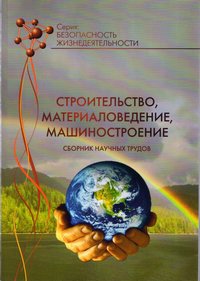Analysis of labor law and method of estimation of the condition of labor protection in agricultural households
DOI:
https://doi.org/10.30838/P.CMM.2415.250918.261.164Keywords:
analysis methods, occupational injuries, indicators of injuries, branches of production, accident, causes, fatal injuries, types of eventsAbstract
Purpose of work: to consider the dynamics of production and mortal traumatism in Ukraine for 2016 -2017 and dynamics of the most dangerous industries of production. To consider the methods of analysis of production traumatism and profzakhvoryuvan'. To consider principal reasons of production traumatism and conduct the analysis of indexes of production traumatism on the Dnepropetrovsk area for 2014-2016, on the basis of analysis to develop measures on the improvement of terms of labour. Method:An analysis of accidents on the productions of Ukraine is one of basic and necessary ways of development of mechanisms of prophylaxis and prevention of traumatism. Consequently, only after determination of the state of safety of labour in industry, on a production, objective exposure of the real reasons of that or other accident and conformities to law of his origin and the real possibilities appear for the effective search of ways of activation of prophylactic work and decline of traumatism. Results: Hygienic classification of labor on the indicators of harmfulness and danger factors of the production environment, the severity and i ntensity of the labor process is intended for hygienic assessment of conditions and the nature of work in the workplace in order: to control the working conditions of the worker (workers) for compliance with the current sanitary rules and norms, hygiene norms and issuance appropriate hygienic conclusion; certification of workplaces under working conditions; prioritization of health measures; Establishing a data bank on working conditions at the enterprise, district, city, region, country level; development of recommendations for professional removal, professional suitability. Scientific novelty: The analysis of industrial injuries is based on the criterion of accidents related to production, and does not take into account the type of economic activity during which the accident occurred. To the base of accidents, which are used to analyze the injury, do not include cases that occurred as a result of the impact on the injured harmful and dangerous production factor and recognized as such, that they are not related to the produc tion. Practical significance: priority directions of work in the field of labor protection have been determined.
References
Analis strakhovykh neshchasnykh vypadkiv na vyrobnytstvi ta profzakhvoriuvan za 2015-2017 rik [Analysis of unhappy accidents insured on a productionand professional diseases for 2015-2017]. Fond sozialnogo strakhuvannia vid neshchasnykh vypadkiv na vyrobnytstvi ta profzakhvoriuvan Ukrainy.[Fund of socialsecurity from industrial accidents and professionaldiseases of Ukraine], [Electronic resource] Available at: http://www.social.org.ua/view// (in Ukrainian).
Voynalovich O. V. Aktualni zavdannya derzhavnoho nahlyadu ta kontrolyu z okhorony pratsi v silskomu hospodarstvi.[Actual tasks of state supervision andcontrol are from a labour protection in agriculture]. Problemy okhorony pratsi v Ukrayini. Zbirnyk naukovykh prats. [of Problem of labour protection in Ukraine.Collection of scientific works]. - K.: NNDIPBOP, 2011, no.21, 168 р. (in Ukrainian).
Degtiarenko G.E., Romanenko N.V. and Leskovets V.I. Stan nevyrobnychoho travmatyzmu v Ukrayini. [Stan of the neobrobnichogo traumatism in Ukraine]. Visnyk Natsional'noho naukovo-doslidnoho instytutu okhorony pratsi.[News of the National Science and Diversity Forum]. - К.: NNDIPBOP, 2004. - № 7. - P. 33 - 35. (in Ukrainian).
Derevyanskiy V.Yu. and Lyubovskyy Yu.S. Prognoz travmatyzma na shakhtnykh lentochnykh konveyerakh. [Forecast of traumatism on mine belt conveyors]. Uhol' Ukrayny [Coal of Ukraine]. - 2007. - No. 3. - P. 8 - 30.
Derzhavna sluzhba Ukrayiny z pytan' pratsi [Government service of Ukraine is on questions labour Electronic resource] Available at: http://dsp.gov.ua./. (in Ukrainian).
Melik-Shakhnazarov L. Sh. and Popova T.O. Doslidzhennya vyrobnychoho travmatyzmu v Ukraini [Doslіjdzhennia vibropnichego traumatism in Ukraine]. Informatsiynyy byuleten' z okhorony pratsi [Informational bulletin of the hunter praty. - К.: NNDIPBOP, 2006, Vol. 3, pp. 9 - 13. (in Ukrainian).
Downloads
Published
Issue
Section
License
Редакція Видання категорично засуджує прояви плагіату в статтях та вживає всіх можливих заходів для його недопущення. Плагіат розглядається як форма порушення авторських прав і наукової етики.
При виявлені у статті більш ніж 25% запозиченого тексту без відповідних посилань та використання лапок, стаття кваліфікується як така, що містить плагіат. У цьому випадку стаття більше не розглядається редакцією, а автор отримує перше попередження.
Автори, в статтях яких повторно виявлено плагіат, не зможуть публікуватися в усіх журналах Видавництва ДВНЗ «Придніпровська державна академія будівництва та архітектури».
Автори, які публікуються у цьому журналі, погоджуються з наступними умовами:
- Автори залишають за собою право на авторство своєї роботи та передають журналу право першої публікації цієї роботи на умовах ліцензії Creative Commons Attribution License, котра дозволяє іншим особам вільно розповсюджувати опубліковану роботу з обов'язковим посиланням на авторів оригінальної роботи та першу публікацію роботи у цьому журналі.
- Автори мають право укладати самостійні додаткові угоди щодо неексклюзивного розповсюдження роботи у тому вигляді, в якому вона була опублікована цим журналом (наприклад, розміщувати роботу в електронному сховищі установи або публікувати у складі монографії), за умови збереження посилання на першу публікацію роботи у цьому журналі.
- Політика журналу дозволяє і заохочує розміщення авторами в мережі Інтернет (наприклад, у сховищах установ або на особистих веб-сайтах) рукопису роботи, як до подання цього рукопису до редакції, так і під час його редакційного опрацювання, оскільки це сприяє виникненню продуктивної наукової дискусії та позитивно позначається на оперативності та динаміці цитування опублікованої роботи (див. The Effect of Open Access).

